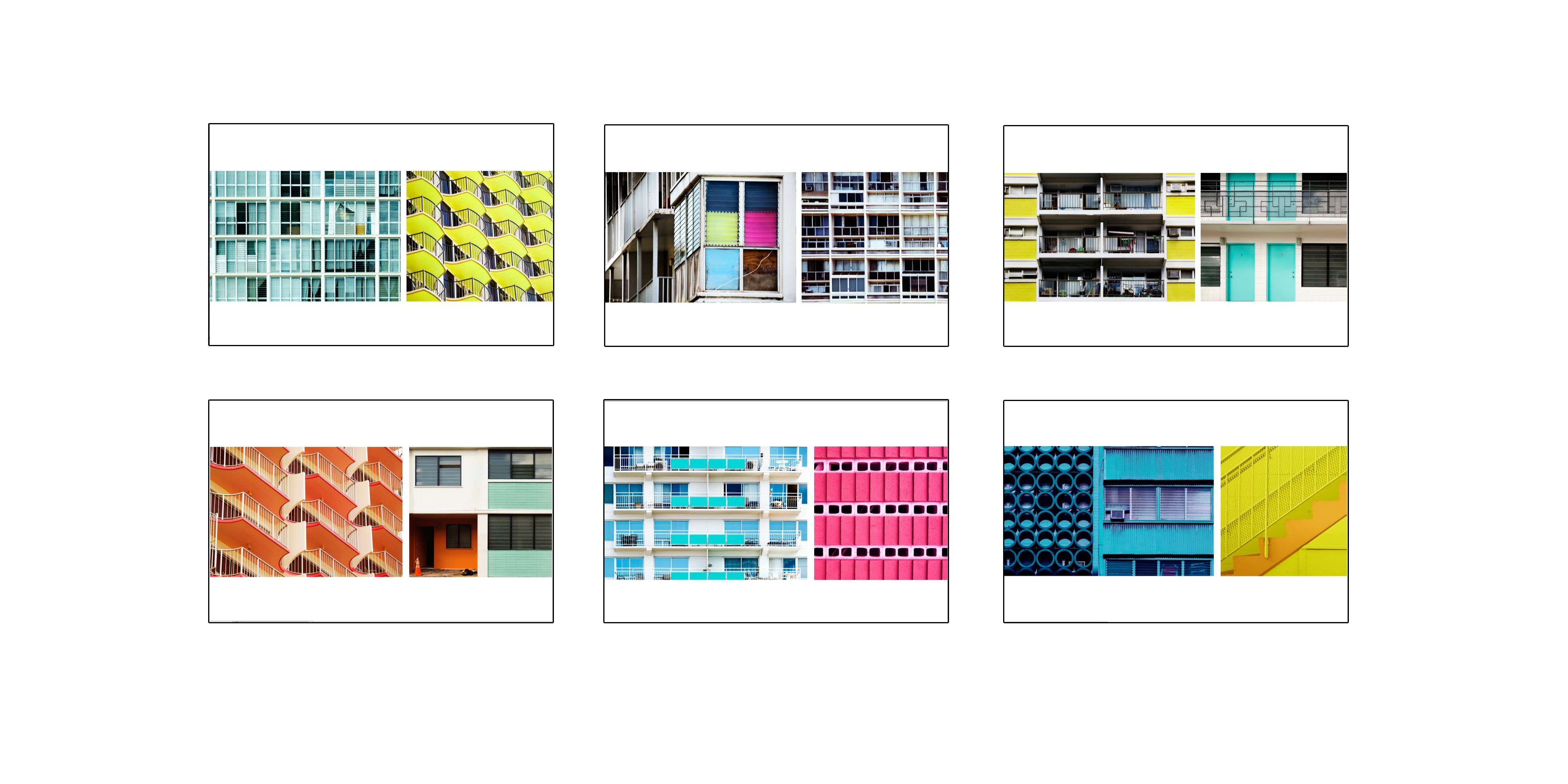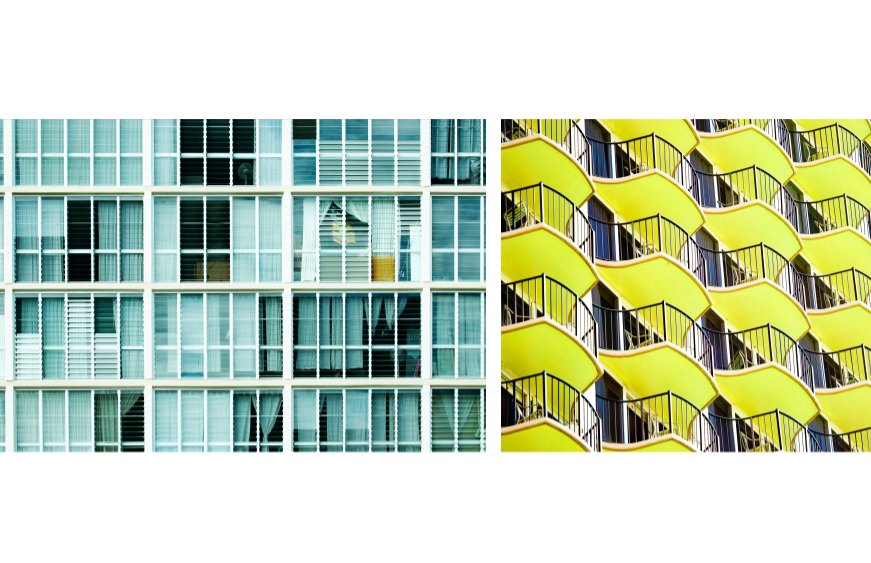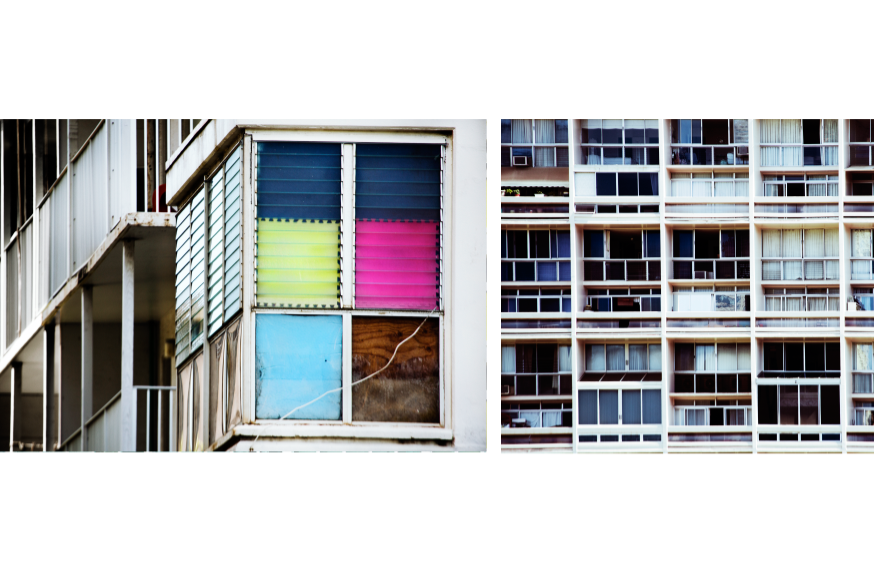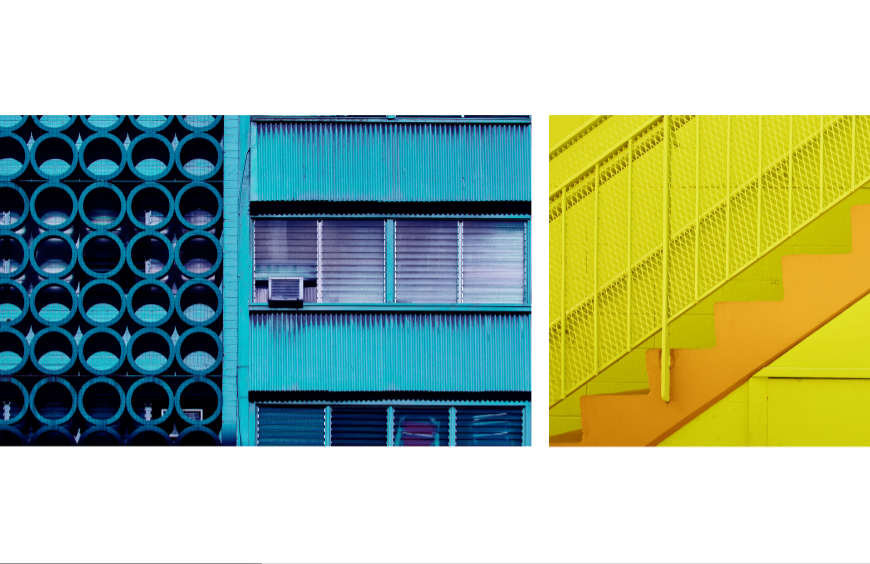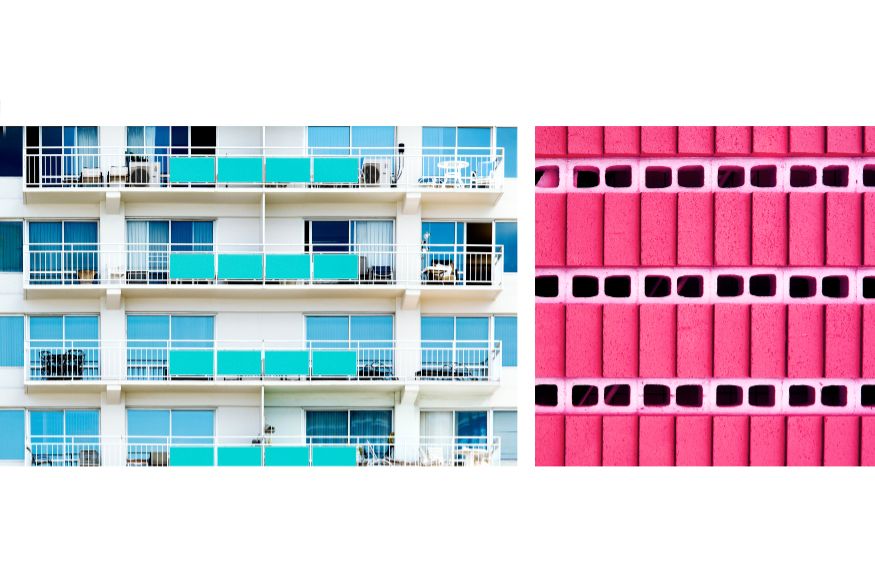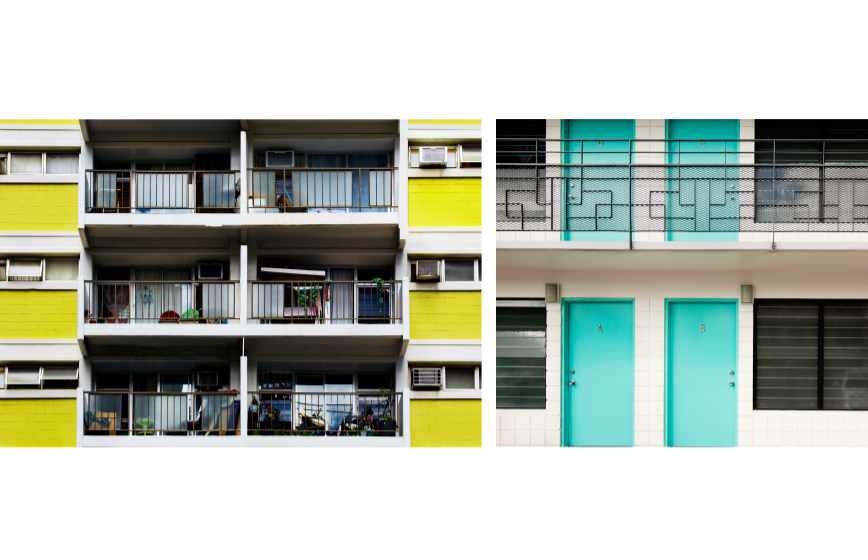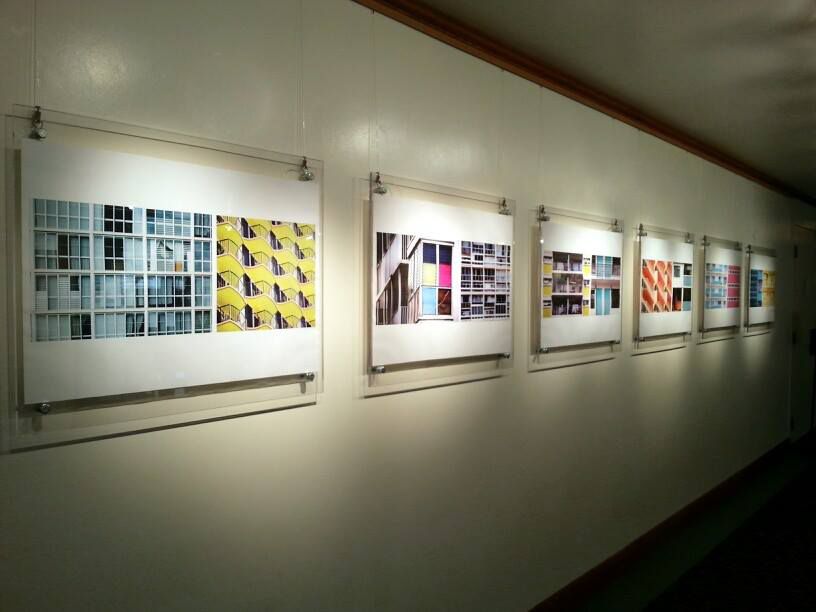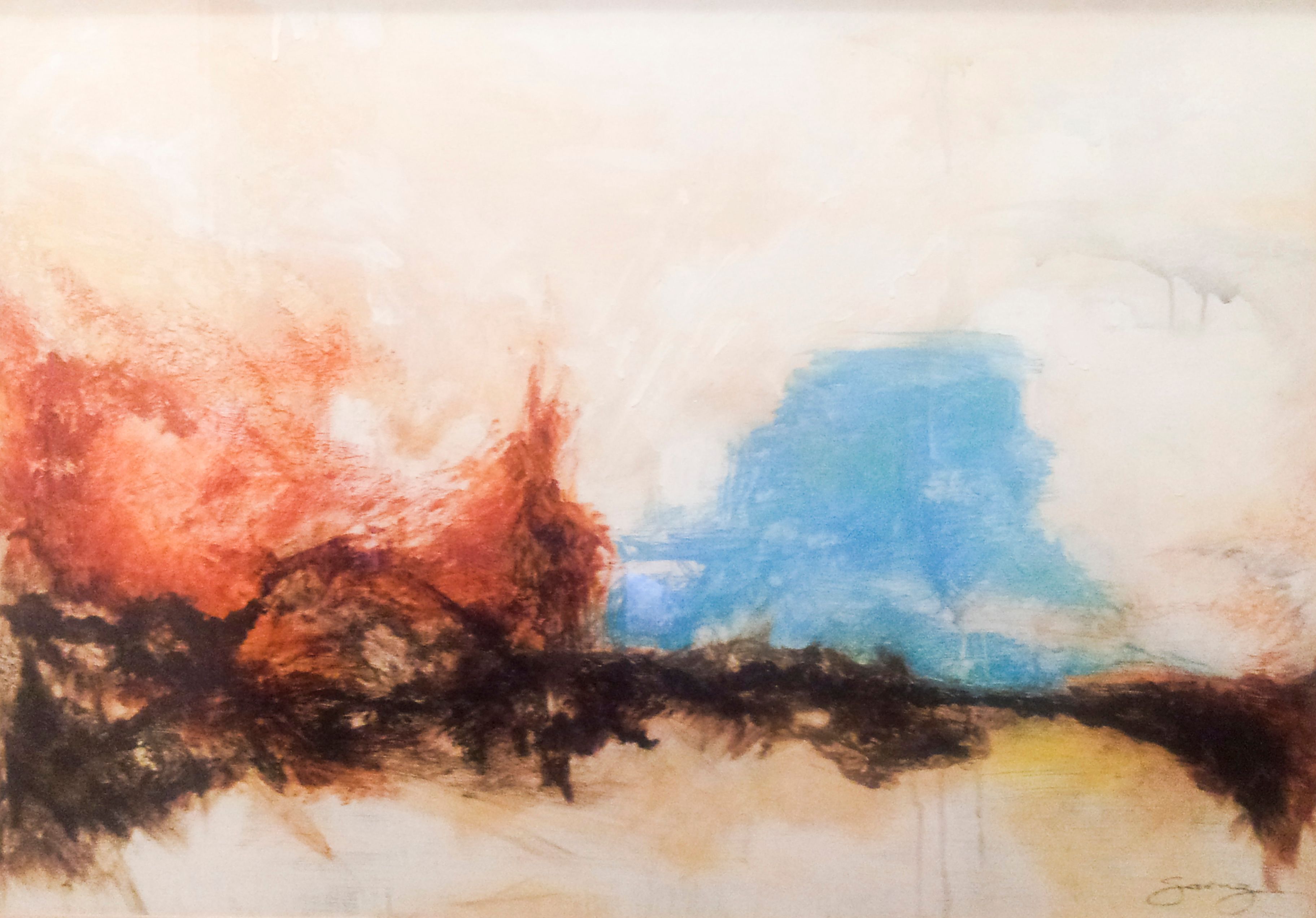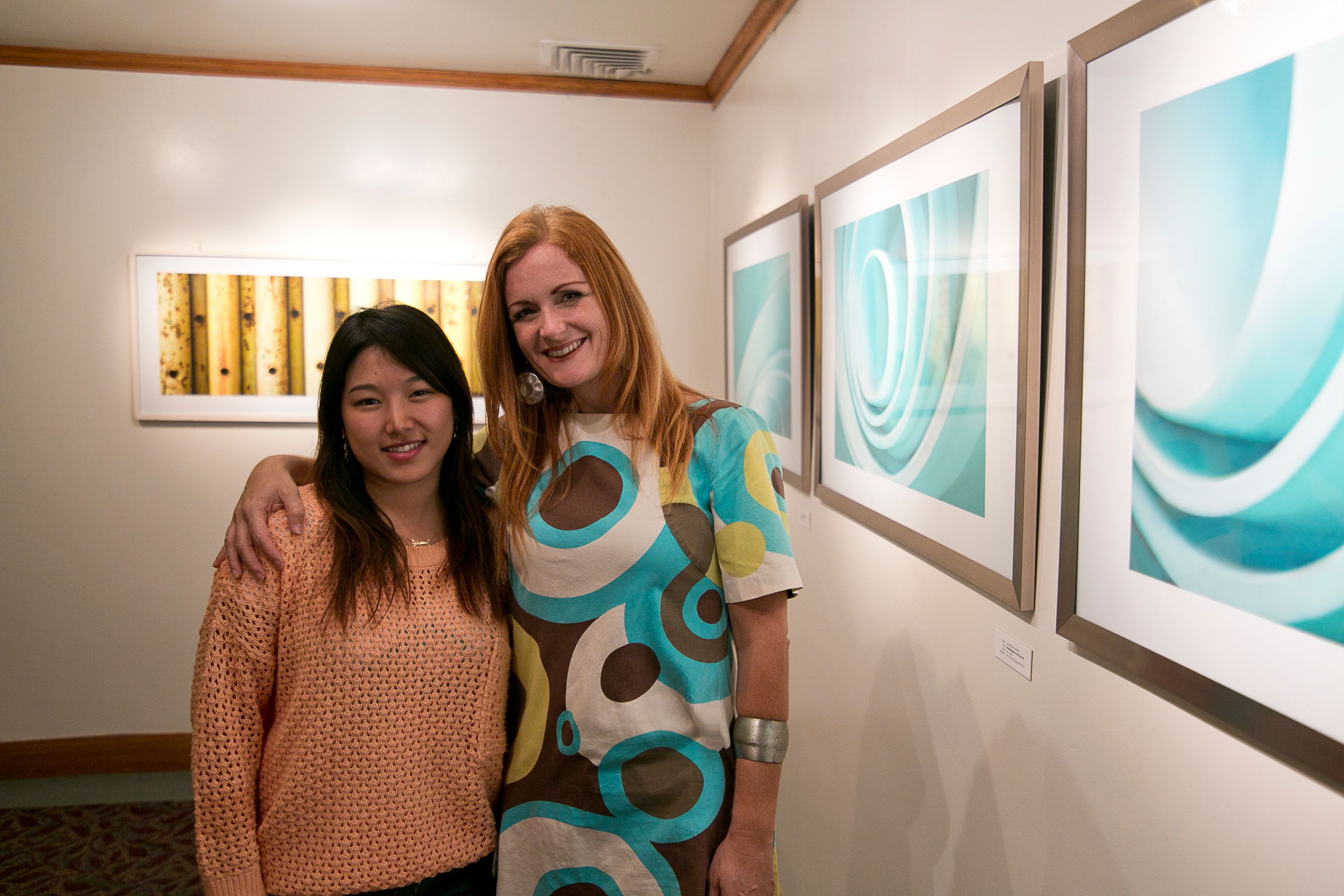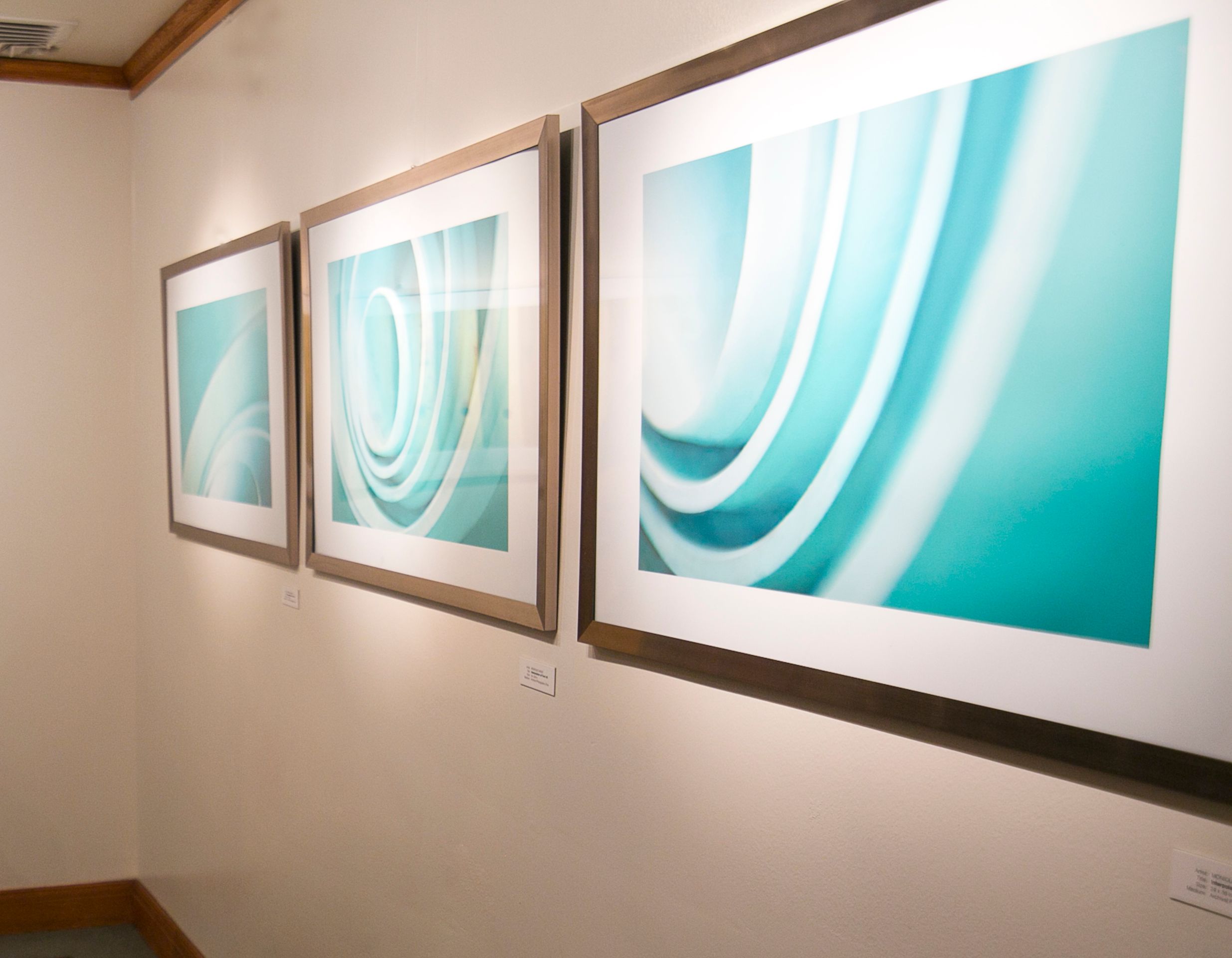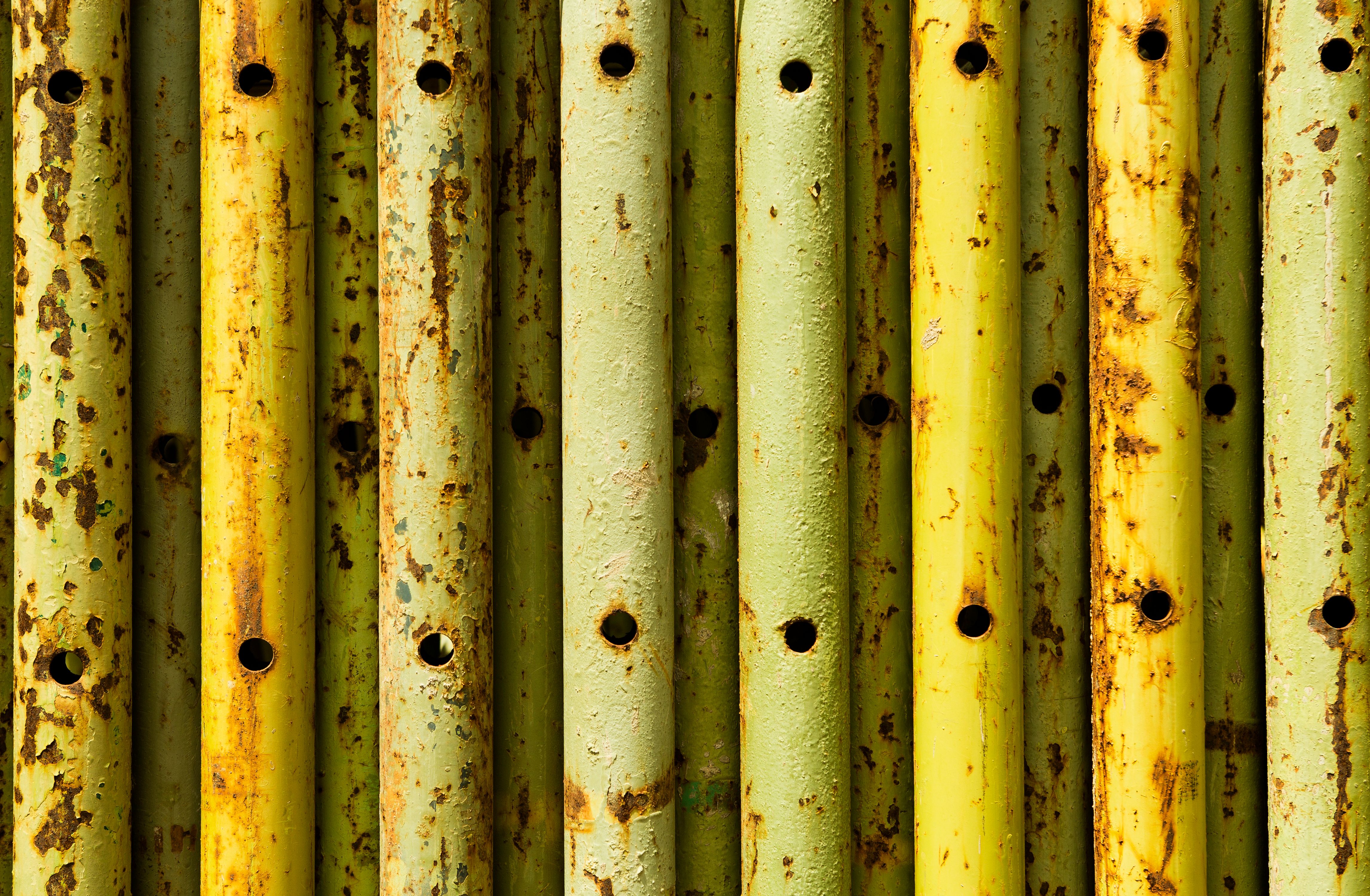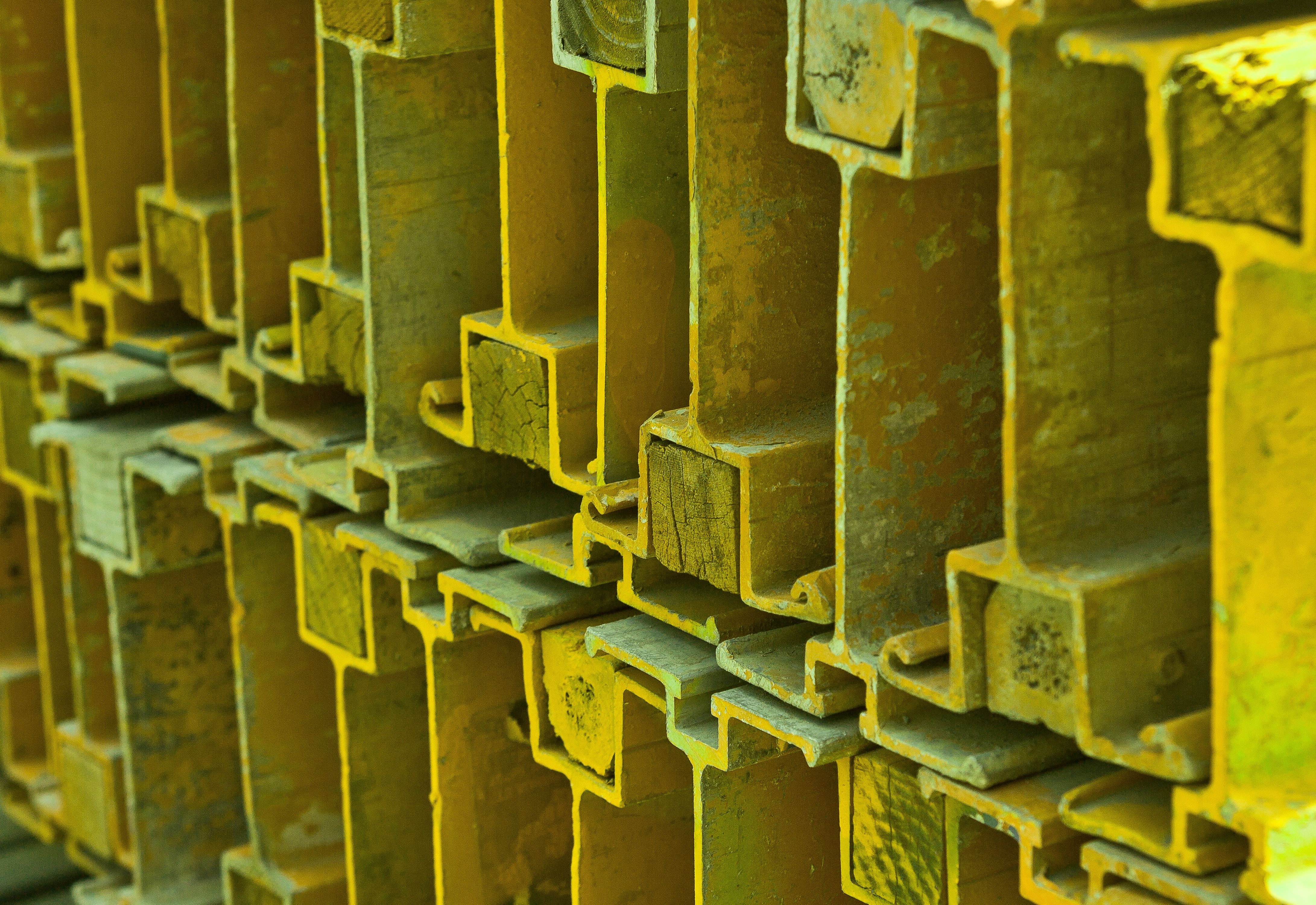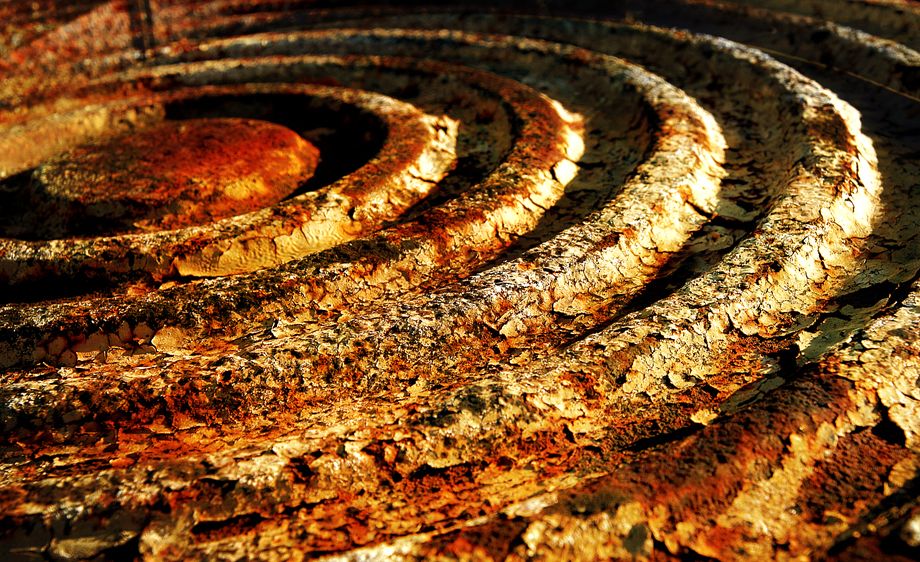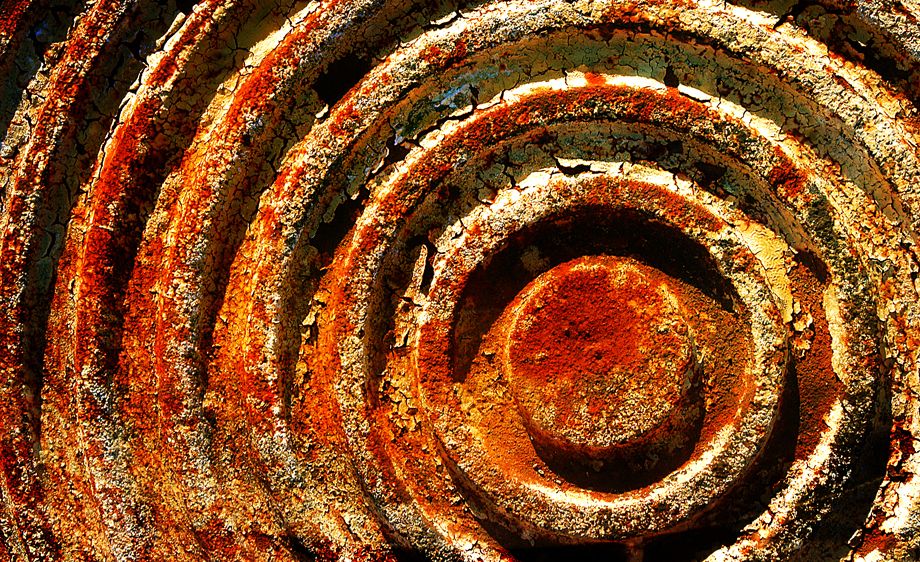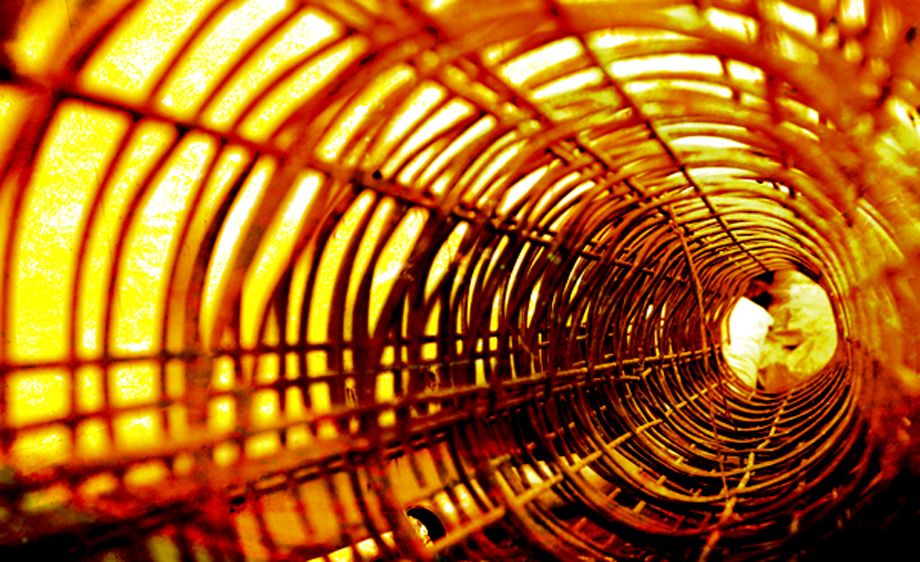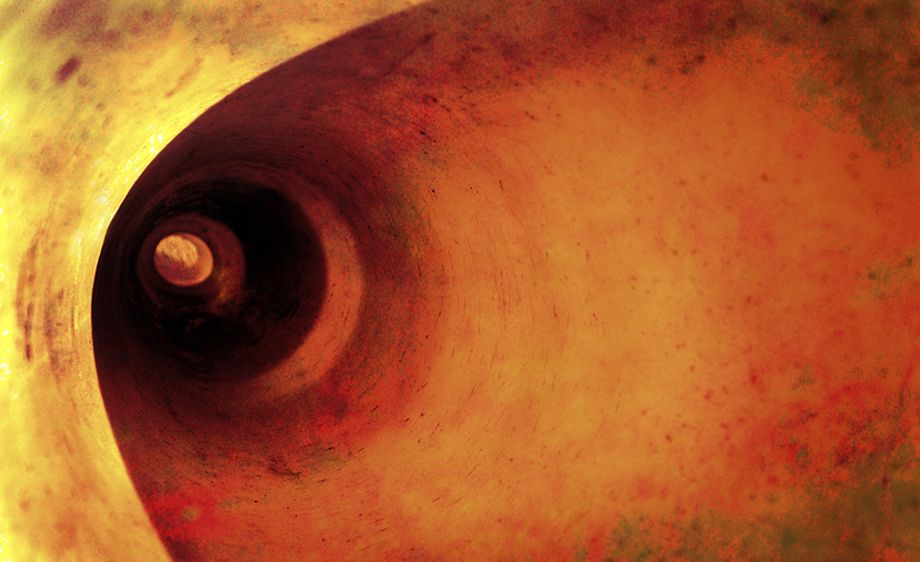"Urban Façade"
The colorful "Urban Façade" series of diptych images is a personal interpretation of the urban landscape scene and fragments of architecture found in Waikiki and close downtown neighborhoods. The aesthetics has strong influence in the work of dutch painter Piet Mondrian, and his grid-based abstract artwork and also German Photographer Andreas Gursky.
Besides the strong formal aesthetics in these structures and patterns, these images also present ambiguous intent and meaning. The word "façade" comes from the French language, literally meaning "frontage" or "face". In architecture, the façade of a building is often the most important aspect from a design standpoint, as it sets the tone for the rest of the building. In figurative speech, the façade is the false idea of the true situation or the "face" that people show to others, a fake illusion or appearance as opposed to what they really are. As we take a close look at these fragments, we contemplate the tensions found in the disparity of large luxurious hotel building structures to very modest and old, decaying residential buildings that one might encounter in a very close geographic proximity, in some case even side by side.
Within the abstract aesthetics of these hues, we find a commentary on our globalized modern world, architecture and human intervention in nature as well as the relationship of the anonymous individual to mass phenomena. It’s a depiction of the structures and patterns of collective existence, of the masses and large crowds we encounter in our urban landscapes of modern society.
